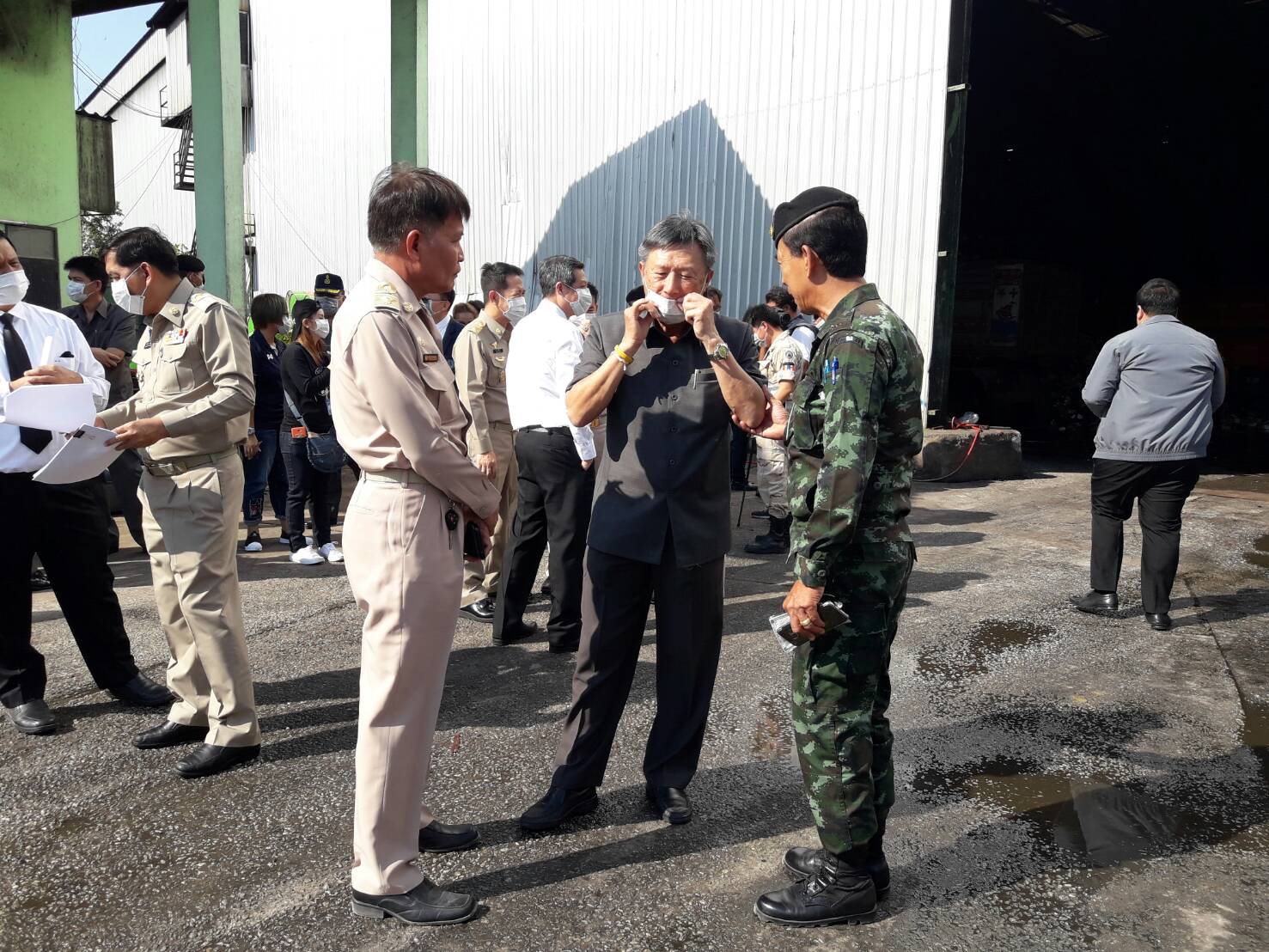Ministry of Interior inspectors ordered Pattaya to once-and-for-all solve its long-running waste-disposal problem.
Assistant Minister Sanitwong Na Ayutthaya on Feb. 16 led a team of inspectors to the city’s overflowing waste-transfer station on Sukhumvit Soi 3 and then to its former garbage dump in Khao Maikaew, which was closed in 2013 after prolonged protests by sub-district residents.
The assistant minister also checked on the Soi Nong Yai sewage-treatment plant, which was recently discovered to be leaking wastewater due to poor maintenance.
The inspection was ordered by Interior Minister Anupong Paojinda following increasing numbers of complaints about the smell, unsafe amounts of garbage piling up in Pattaya, Koh Larn, Jomtien Beach and surrounding sub-districts.
The complaints and problems, which have been compounding since 2008, have reached a tipping point, the minister said, and city hall must quickly and immediately prepare a plan and budget to solve the problem.
Sanitwong was accompanied by Pattaya, Banglamung District and Chonburi Province officials in his visit to the trash-sorting facility on Sukhumvit Soi 3 where Pattaya officials promised as far back as 2013 to fix.

The sorting station has stunk up the Kratinglai neighborhood since 2008. Residents long have said that every time they complain, dump workers only take measures that alleviate the smell for a short time. Many residents feel ill and have developed respiratory problems because of the fumes.
Residents were told then that the garbage operator’s lease would not be renewed when it came up for renewal in 2012, but since then, operation has continued and the trash pile only has grown.
Pattaya officials ordered another cleanup in May 2014 with little effect. In January this year, residents renewed their campaign against the dump, with community leader Tee Kladsomthon, 68, saying there are now two separate dump sites with one no longer able to hold any more rubbish, as it is overflowing, and the other area is nearly full.
Boonma Pangrak, president of the Ban Rongmai Ke-ed Community near the Sukhumvit dumpsite, told inspectors last week that 450 tons of garbage are still pouring into the facility every day.
The Kratinglai site was never meant to be a dump, only a sorting and transfer station. But the loss of the city’s main dump in Khao Maikaew and a new influx of garbage from Koh Larn left city hall with few other options.
In 2012, more than a year of disputes with Khao Maikaew residents began, with locals demonstrating against the 400 tons of Pattaya garbage being dumped in their backyards a day.
Neighbors started barricading the entrance to the dump to protest extra-stinky garbage deposits from Koh Larn. Community leaders insisted all waste only come from the mainland.
Intermittent blockades became temporary closures which became a permanent closure in late 2013. Pattaya politicians in office at the time said they had inked agreements with Laem Chabang and Sriracha to take the city’s backed-up trash, but only the port district finally agreed to part of the waste.
Although the 140-rai facility has been closed for four years, 30 of those rai are still covered in ancient trash, a lingering sore point among locals.
Meanwhile, another front in the trash war arose on Koh Larn, where exploding tourist numbers resulted in a historic garbage backlog.
In the past, 15-20 tons of garbage was hauled away each day by barge, but by last year the island was producing nearly 50 tons of trash a day. Poor maintenance resulted in barges breaking down and the one left in service could handle at most 24 tons a day.
By September last year, 30,000 tons of waste was piled up on the island. A drop in the number of visitors saw the crisis ease late last year, but about 10,000 tons of refuse remain.
Sanitwong said he would report to his superiors on the current problems and the ministry would be pushing Pattaya to find a solution as quickly as possible.




